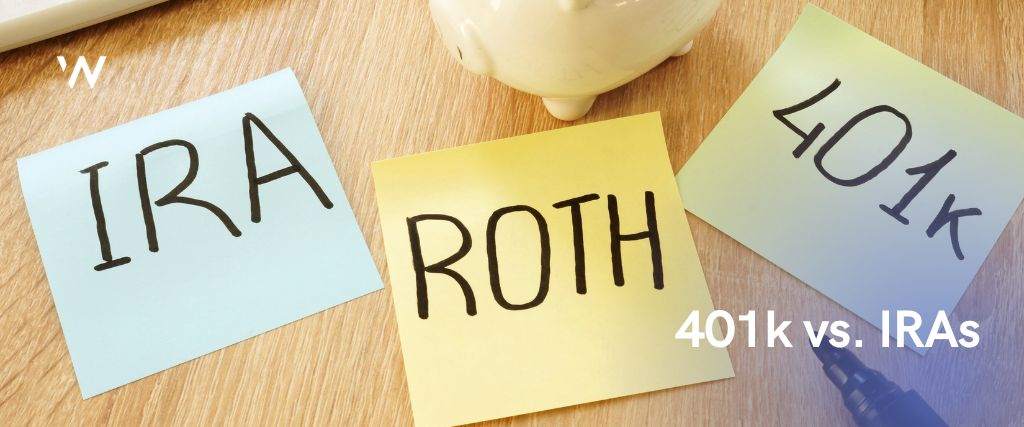Algorithmic Trading: A Guide for New Investors
Algorithmic trading is a new way to invest that has become increasingly popular in the stock market. It’s a form of automated trading that uses complex algorithms and mathematical models to identify profitable opportunities in the markets. By using algorithmic strategies, traders can evaluate large amounts of data quickly and make decisions without being limited by human emotion or intuition. There are some big pros and big cons to this investing approach, but let’s start with the basics of algorithmic trading and how it works before diving into the strategies, tools, and techniques for profitable algo trading.
What is Algorithmic Trading?
Algorithmic trading is, essentially, a way to automate some of your trading strategy. Utilizing complex algorithms and mathematical models, profitable opportunities in the markets are identified for investors. By using these algorithmic strategies, traders can evaluate large amounts of data quickly and make decisions without being hindered by human error or emotional trading. This approach has become increasingly popular recently, as many investors are using these tools as part of their investing strategy.
Strategies Used
One of the primary strategies used in algo trading is known as “technical analysis”. This strategy involves analyzing historical price data of stocks and other markets to predict future trends and identify potential investment opportunities. Technical analysis also takes into account volume information, momentum indicators, oscillators, support/resistance levels, and other market indicators in order to make informed decisions about buying and selling assets.
In addition to technical analysis, algorithmic traders can use fundamental analysis strategies as well. Fundamental analysis focuses on macroeconomic factors such as interest rates, GDP growth rate, inflation rate, corporate earnings reports, and political events that may impact stock prices. It is often combined with technical analysis for a more comprehensive approach for investors.

Advantages of Algorithmic Trading
Algorithmic trading is popular for a reason – because it offers many advantages over traditional manual trading. The primary benefit is that automated trading allows for faster and more accurate decisions, as well as the ability to analyze large amounts of data quickly and effectively. Additionally, algorithmic systems are able to reduce transaction costs significantly due to their speed and accuracy when executing trades. They can also be customized for different strategies, meaning investors can tailor their approach based on their individual goals and risk tolerance.
Another appealing aspect of algorithmic trading is its ability to eliminate emotions from the decision-making process, which can help reduce losses and improve overall returns. By relying on pre-defined parameters rather than emotional reactions, traders can better manage risk while achieving consistent returns in both bull and bear markets.
Faster Execution Times
Other unique advantages of algo trading include fast execution times (which help traders capitalize on small changes in market prices), improved risk management capabilities (which allow traders to keep their positions within acceptable risk parameters), as well as improved accuracy as a result of the ability to process large amounts of data quickly without human error.
There are many examples of successful investors employing algorithmic trading strategies, such as those employed by Renaissance Technologies’ Medallion Fund, which generated returns averaging 71% annually since 1988, or Bridgewater Associates hedge fund which was able to generate returns greater than 20% annually since 1975 using quantitative investment techniques derived from trading algorithms.

Strategies + Tools Used in Algorithmic Trading
When it comes to strategies used in algorithmic trading, the most popular ones are trend-following strategies and mean reversion strategies. Trend-following strategies involve identifying and following the direction of the prevailing trend, while mean reversion strategies aim to identify when a price is deviating from its mean or expected price. Other popular algo trading strategies include arbitrage, quantitative portfolio management, momentum, market making, and portfolio optimization.
In terms of tools used for algorithmic trading, there are numerous options available depending on the investor's budget and needs. These tools range from low-cost software packages designed for entry-level users to sophisticated integrated software suites used by professional investors. Back-testing platforms are one of the most commonly used tools that allow traders to test their algorithms against historical data. There are also risk management systems which help traders keep their positions within acceptable risk parameters, quantitative analysis tools which can help assess the performance of an algorithm, order execution systems which allow automatic orders implementation, and finally portfolio optimization tools that help construct efficient portfolios given certain constraints.
No matter what type of tool an investor uses, they should always seek to diversify their algorithmic trading strategies with both technical and fundamental analysis techniques in order to maximize returns while minimizing risks associated with any individual trade. Additionally, investors should back-test their algorithms prior to going live in order to ensure that they have an effective strategy in place before putting real money into the financial markets. With careful research and a clear understanding of all aspects involved in algo trading, investors should be able to use this method profitably albeit with caution (and if they can afford it).
The Disadvantages of Algorithmic Trading
Letting machines do all the thinking comes with a host of inherent risks. The benefits of algorithmic trading provide great tools for investors to have at their disposal, but should be used as part of a larger strategy because there are also potentially huge pitfalls if they are the only tools being used. Of course, the main disadvantage lies in its cost – algorithmic trading requires a significant upfront investment in terms of software development costs, commission payments for managed accounts, as well as ongoing maintenance fees which are often too costly for most investors.
Beyond just the cost, trading algorithms rely on complex mathematical models that are often difficult for novice investors to understand or interpret accurately, which can lead to mistakes and significant losses. Also, back-testing results may not always accurately reflect the live performance of an algorithm due to varying market conditions and variables that cannot be simulated in a virtual environment, such as liquidity or order sizes.
Overall, algorithmic trading can prove beneficial for experienced investors looking to take advantage of computer-aided decision making, but it is important to remember that no system will guarantee consistent profits every time without risk management techniques being employed first. It’s a great tool, but it should always be used as one contribution to a larger investing strategy – ideally one managed by real humans!

Tips for Investing Successfully with Algorithmic Trading
The key to successfully investing with algorithmic trading is to create a clear strategy and then implement it properly. It is important to identify the goals of the trading strategy, such as whether it is intended for making short-term profits or more long-term investments. Additionally, investors should research various strategies and back-test their algorithms using historical data to assess the effectiveness of their system prior to implementing them live in the financial markets.
Once a suitable strategy has been identified, investors should develop an algorithm based on technical indicators and parameters that can be used to execute trades according to predetermined criteria. This algorithm should then be properly tested on historical data in order to determine its accuracy before going live in the markets. It is also important for investors to constantly monitor any changes in market conditions or movements which may impact their algorithms’ performance.
Risk Management
Investors should also take care when setting up their risk management parameters as these will play a major role in determining how profitable an algorithm is over time. Risk management techniques can include stop loss orders, trailing stops, and position sizing, which all help ensure losses are kept within acceptable limits while increasing returns over time. Additionally, investors should always diversify their portfolio with different assets and strategies so that they have exposure to multiple markets and instruments at any given time.
Finally, investors using these tools still need to keep up-to-date with current market developments and news, as this can have an impact on algorithmic trading performance as well. By staying informed about news related events or economic releases, traders can better adjust their trading algorithms accordingly in order to maximize profitability while minimizing risk exposure. All these steps combined work together towards helping investors achieve success with algorithmic trading by ensuring they have a solid foundation on which they can build upon for continued success over time.

The Human Solution
Unless you’re a veteran investor with lots of money to invest in these tools and time to optimize them, you’re probably going to want to start with a more simple approach. If you’re new to investing, you’ll probably need some financial expertise to help you on your investing journey, especially if you want to build a diverse and rewarding portfolio. If you ask a bank for advice, they will ask for an initial investment in the six figures. At the same time, most investing apps don’t offer any guidance whatsoever.
That’s where Wizest comes in. We created an investing solution to democratize the stock market and remove some barriers to entry that discourage novice investors. We understand the stock market can be intimidating and overwhelming and that most people’s lives are too busy to spend hours analyzing the market and making thoughtful investments.
Wizest lets you pick people instead of stocks. You can build your team of financial experts by browsing their Expert Profiles and Portfolios like you would on a social media platform. Building your team takes just minutes, replicating the portfolios of Experts with one click after you check out their profiles. It’s like fantasy football for investing, and you can shuffle your team of Experts anytime!
Our platform was designed to make investing simple for new investors, diversification easier for veteran investors, and the financial journey engaging and fun for everyone, regardless of your experience level. Our simple subscription model makes it affordable for everyone (the cost of 1 coffee a week), no matter the size of your account, with no hidden fees.
Start investing today to take advantage of our special launch pricing!
The Debt Ceiling and How it Affects Individuals...
2023-06-07
A look at the function the debt ceiling serves in our economy, how it affects individuals, and how w...
Read more401k vs IRAs: Choosing the Right Savings Option...
2023-06-13
401k vs IRAs - Putting money in a savings account is great, but there are more efficient ways to rea...
Read moreA Beginner's Guide to Futures Trading: Strategies ...
2023-06-22
Futures trading gives investors access to various markets with just one contract instead of multiple...
Read more


